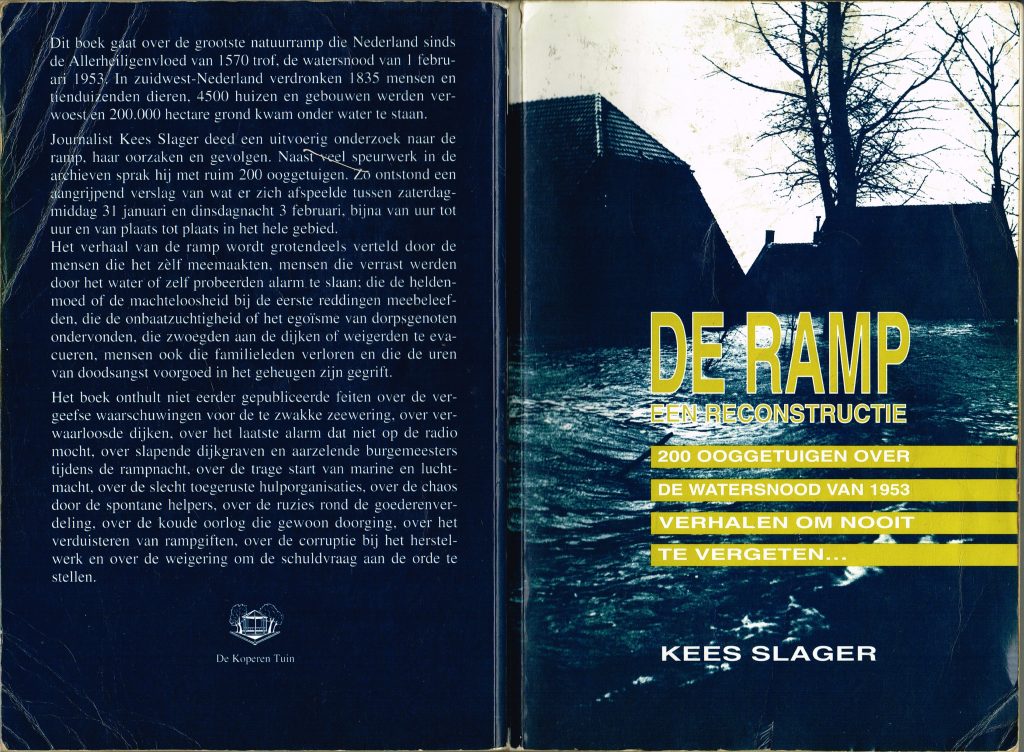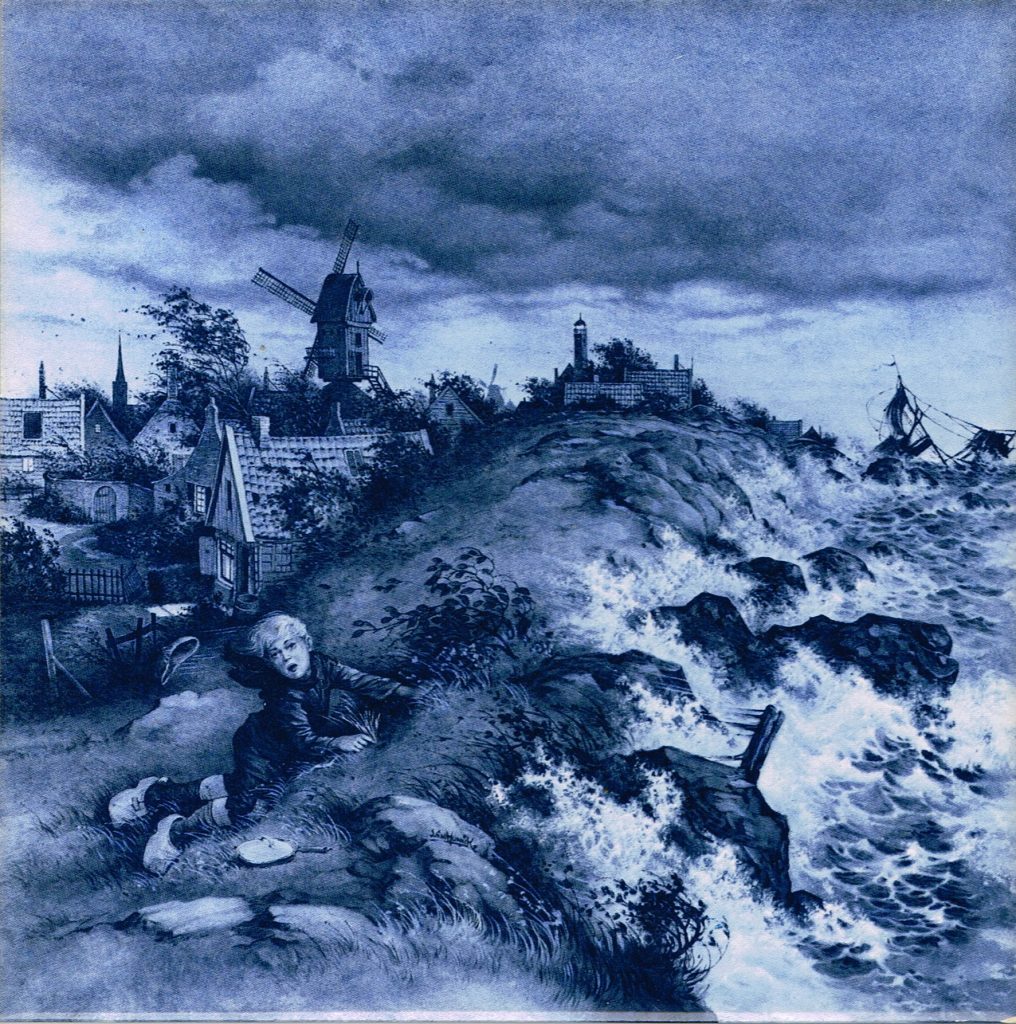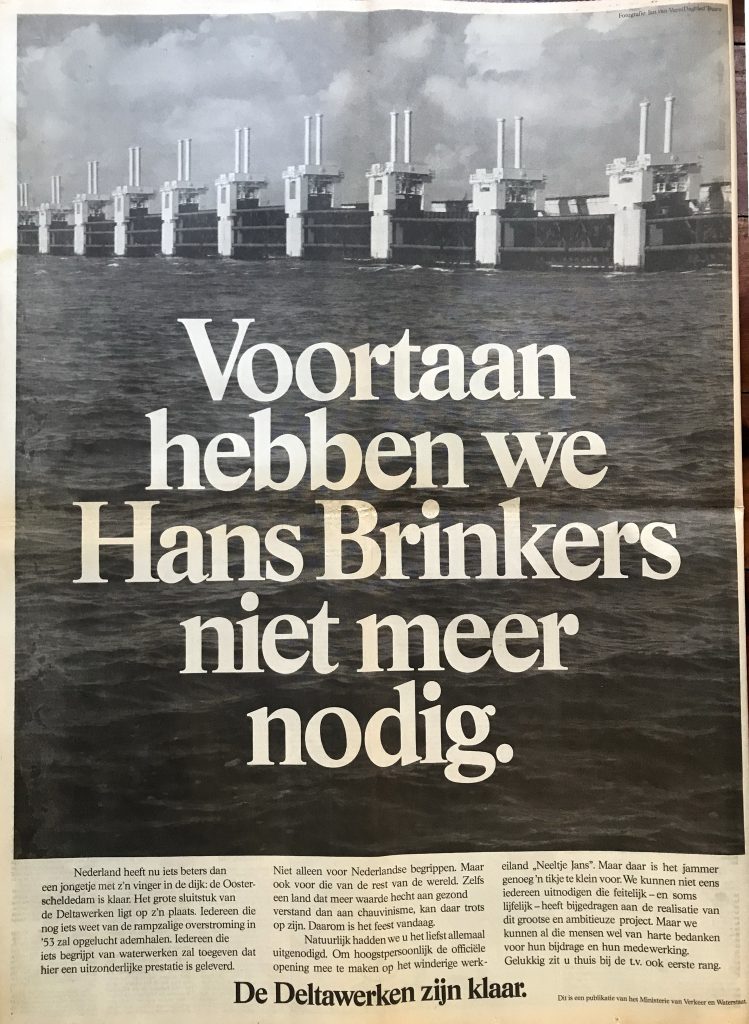Just as there have been extreme weather events in Australia last year carrying over into this year resulting in devastating floods over large areas of Australia resulting in loss of life, livelihood and billions of dollars’ worth of damage to property and infrastructure, so there was seventy years ago an extreme weather event in North Western Europe causing flooding in The Netherlands and Britain and other countries also causing major loss of life, livelihood and damage to property and infrastructure. It has become known as the North Sea Flood of 1953.
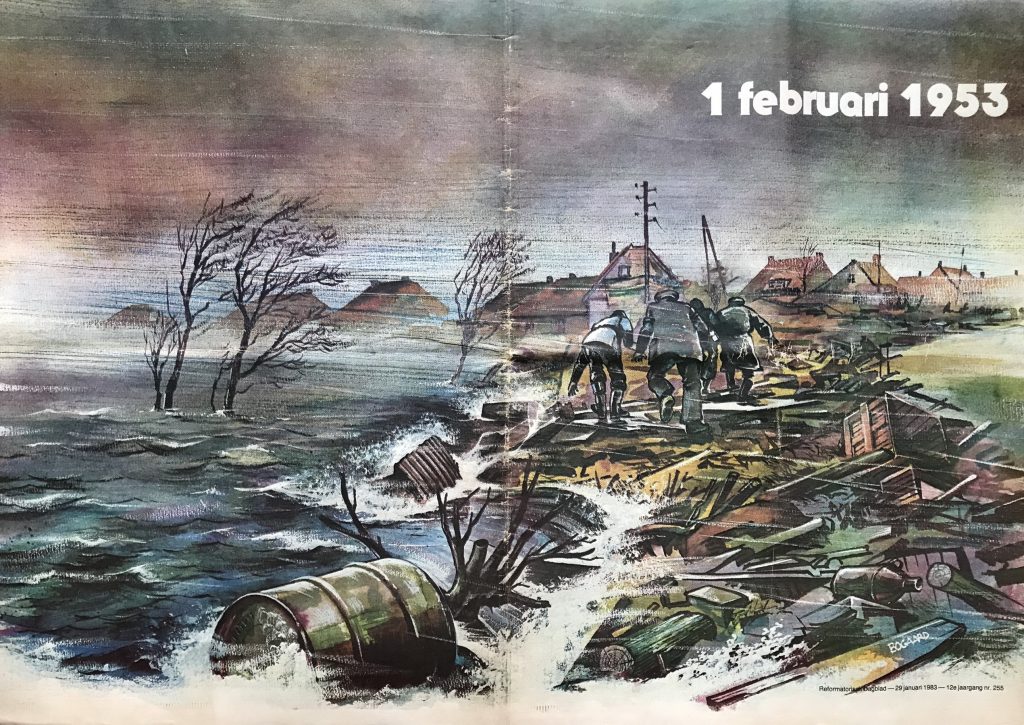
Most sea defences facing the surge were overwhelmed, causing extensive flooding.
The storm and flooding occurred at the end of Saturday, 31 January 1953 and morning of the next day. A combination of a high spring tide and a severe European windstorm over the North Sea caused a storm tide. The combination of wind, high tide, and low pressure caused the sea to flood land up to 5.6 metres above mean sea level.
Hardest his was Zeeland where dykes were breached in 67 locations.. The highest death tolls were recorded on the islands of Schouwen-Duiveland and Goeree-Overflakkee. They estimated that flooding killed 1,835 people and forced the emergency evacuation of 70,000 more. An estimated 30,000 animals drowned, and 47,300 buildings were damaged, of which 10,000 had to be taken down (or were swept away). The total damage is estimated at 1 billion Dutch guilders.
Newspapers and magazines with pictures from the Flood
In the Netherlands in 1953 the populace got the news of the floods, rescue efforts and flood relief fundraising mainly through radio and the printed press,. Dutch news reporters were on the spot.
Most documentation is in Dutch, however the pictures in the magazines speak for themselves (scroll down through the magazines). In the Delta Plan section there is also a document in English.
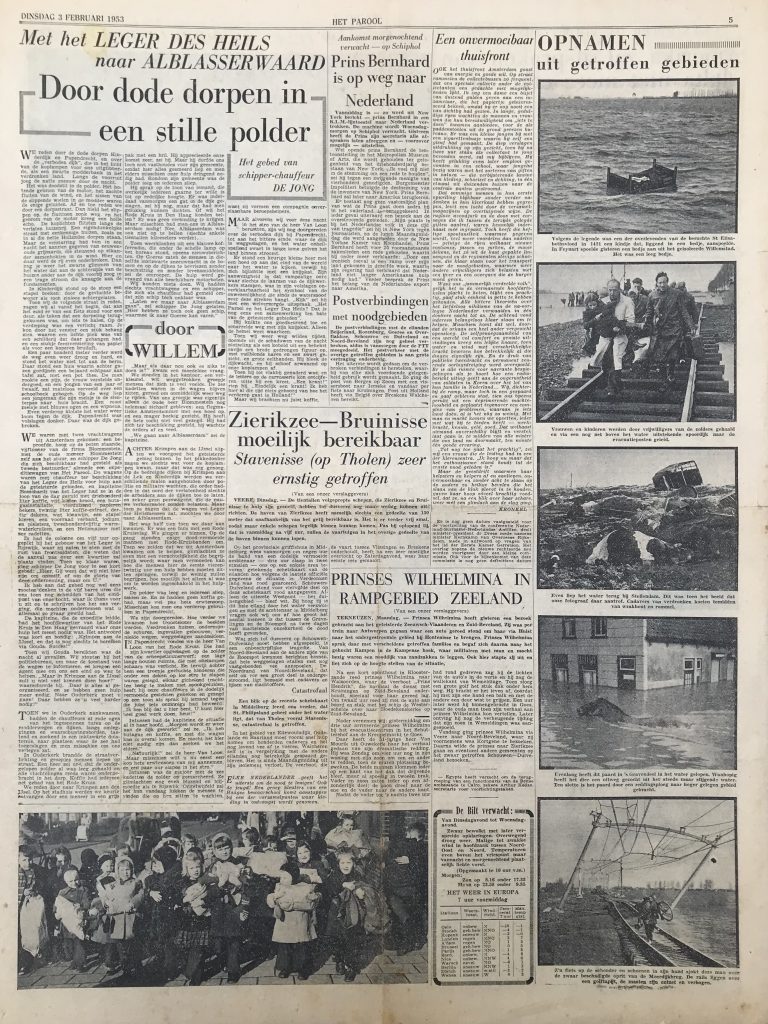

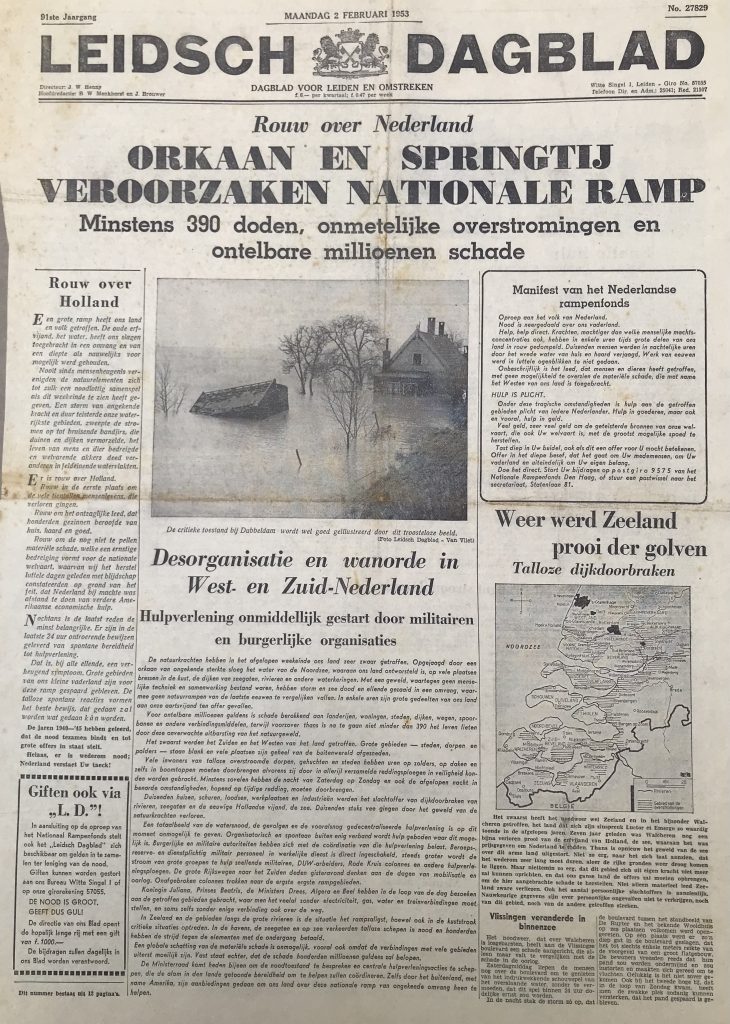
Click here for more Dutch newspaper articles on the Flood.
Reporting on the flood for the Dutch community in Australia
You will find more Dutch reporting with pictures on the event further down this article. We will first concentrate on how the news reached the Dutch Community in Australia. The Australian news coverage about the floods in the Netherlands was mainly second hand, with an understandable slight bias towards the events in Britain (where there were 306 deaths). For the Dutch diaspora in Australia the diplomatic mission and the Dutch Australian Weekly (DAW) became important sources of information. Also family in the Netherlands would send cuttings or complete newspapers and write letters about what was happening. Some of these have found their way into the DACC archives. The majority of Dutch migrants had been in Australia for only a short period and their English was still rudimentary. Daily newspapers would often be out of financial reach. The DAW could be shared between families. The grapevine and telephone would do the rest.
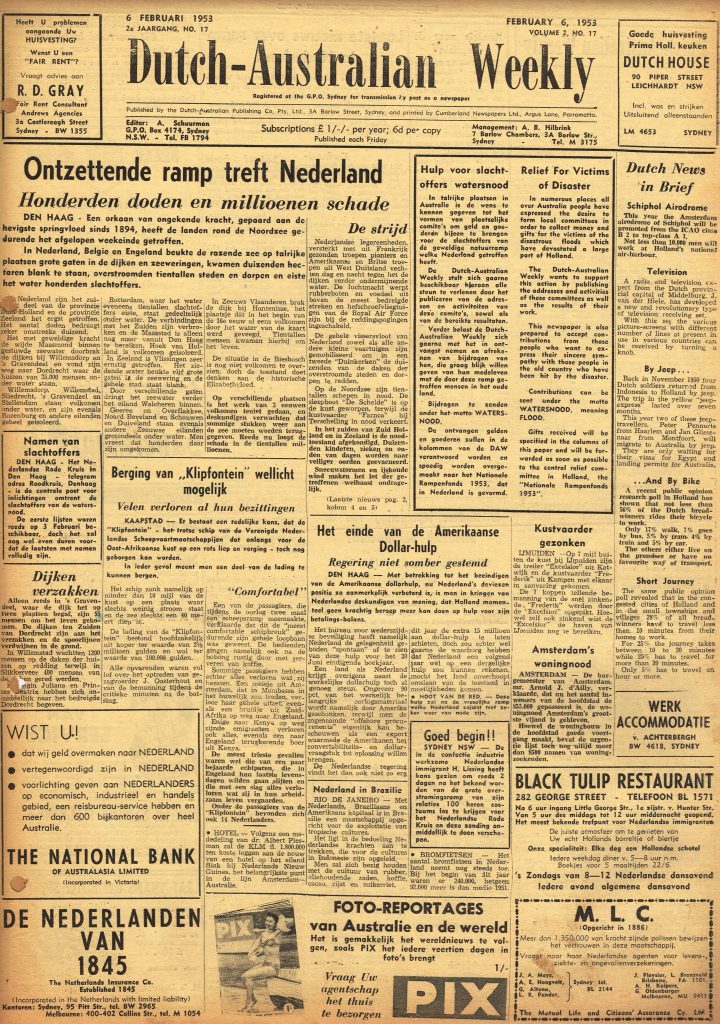
Click here for more articles from the Dutch Australian Weekly on the Flood.
Migration delayed
We were already, in August 1952, prepared to leave for Australia on the Johan van Oldenbarnevelt. Our belongings were packed and waiting to be loaded on board. However, because of a boating accident, the J Van O was needed elsewhere. Because of the floods, we were evacuated from our home in Dordrecht in the middle of the night and moved to relatives on higher ground. We checked on my grandparents on the ‘sGravendeelsedijk in Dordrecht. They were fine and we returned to my uncle and aunt’s place, to be met by Queen Juliana and Princess Wilhelmina, who were handing out clothes on behalf of the Red Cross. I’ll never forget the sight of those two wonderful ladies in rubber boots and fur coats.
Anyway, we were unable to leave till 14 February, when we sailed on the Fairsea. That was a very crowded ship and we picked up more passengers in Port Said. They got off in Aden and we arrived in Fremantle 14 February.
Willemina Foeken
Fundraising in Australia
Fundraising for the victims of the floods started almost immediately and the DAW reported widely on these efforts. It is interesting to see that the DAW published names with the amounts donated (unless anonymity was requested).
Fundraising happened through sale of books about the floods like ‘De Ramp’ (English edition ‘Battle of the Floods’),

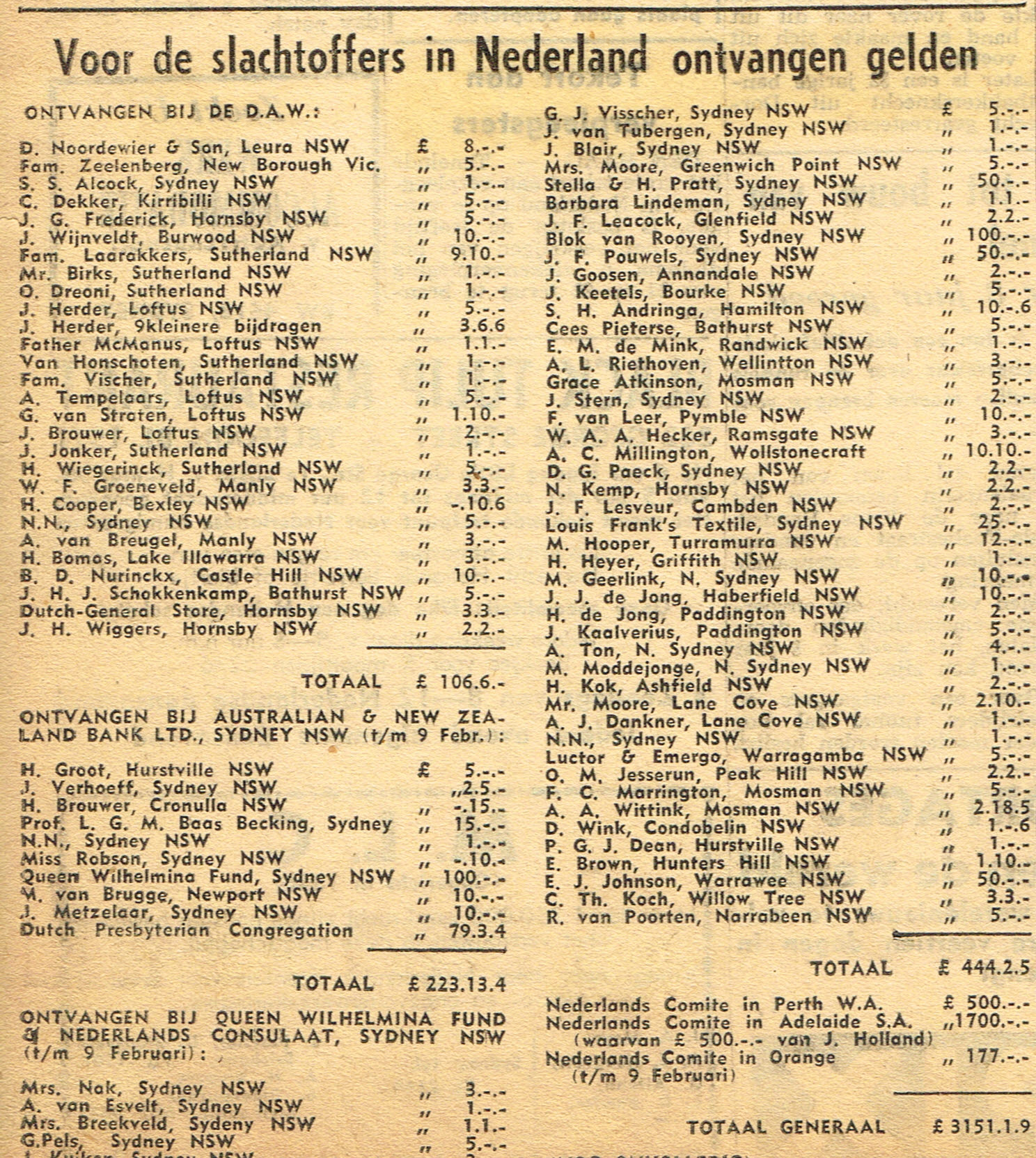
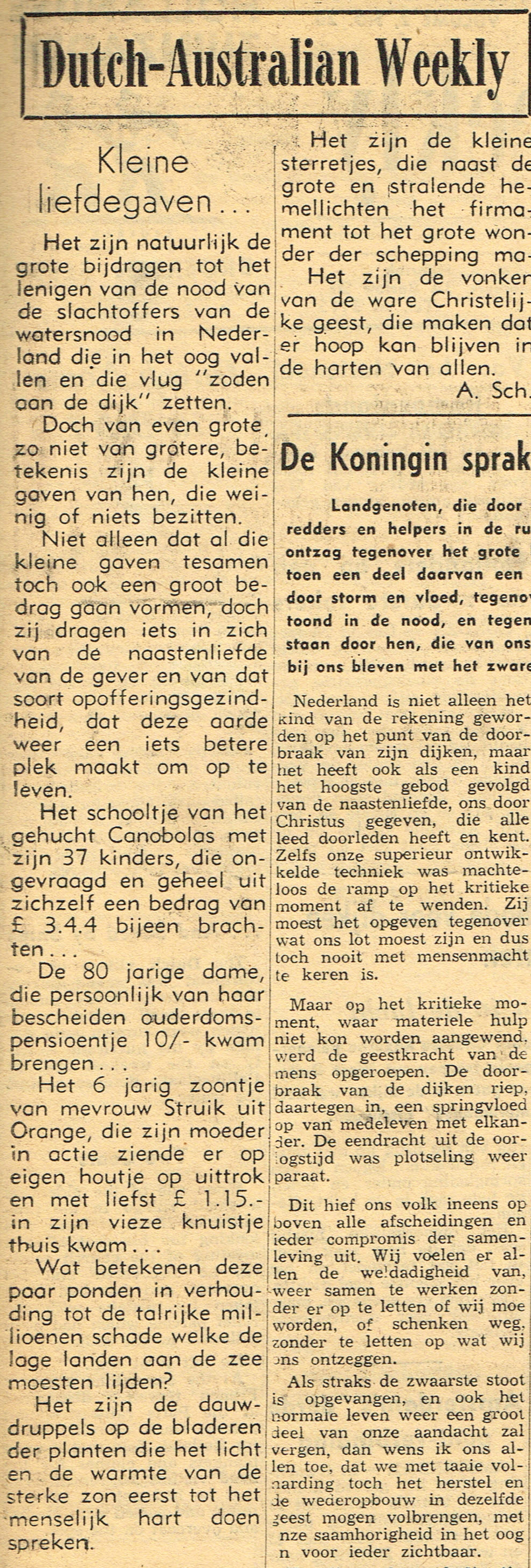


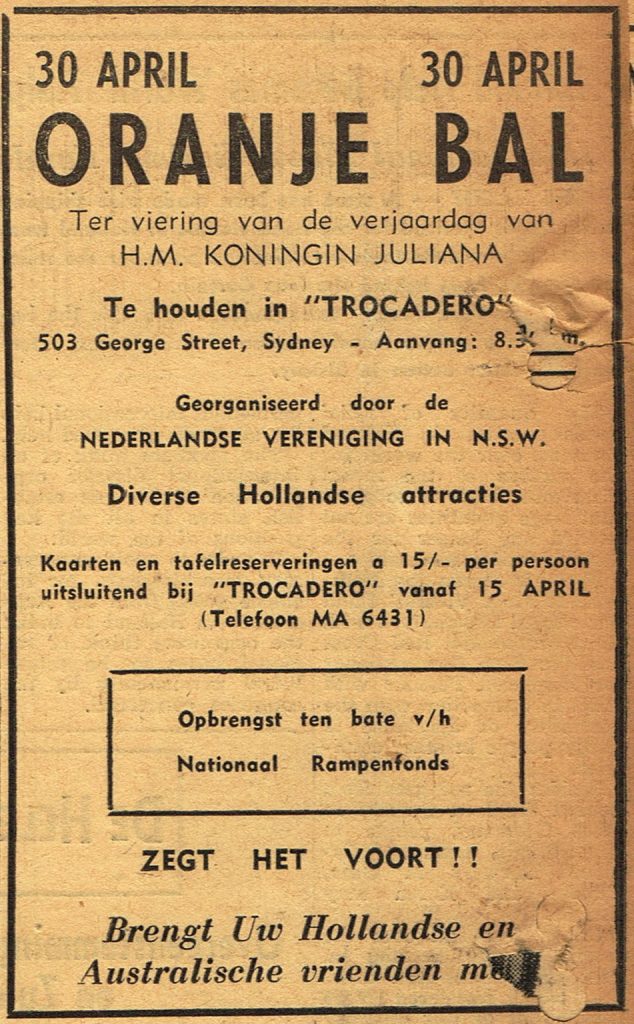
Click here for more articles from the Dutch Australian Weekly on the fundraising.
Reporting from Orange, NSW
The following are press clippings from the scrap album from the late Herbert Frank in Orange.
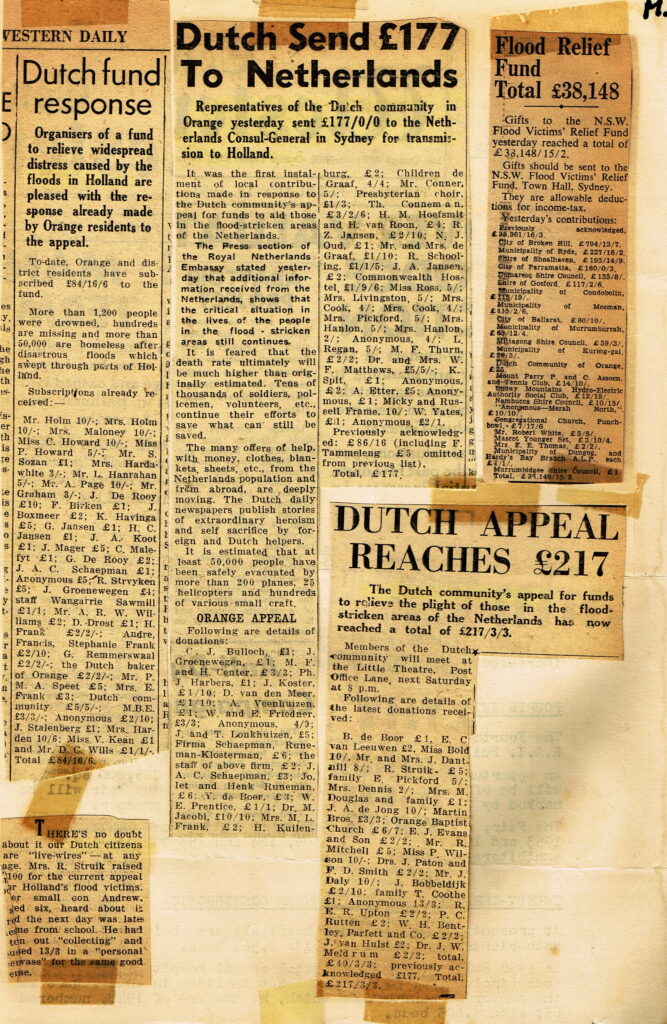
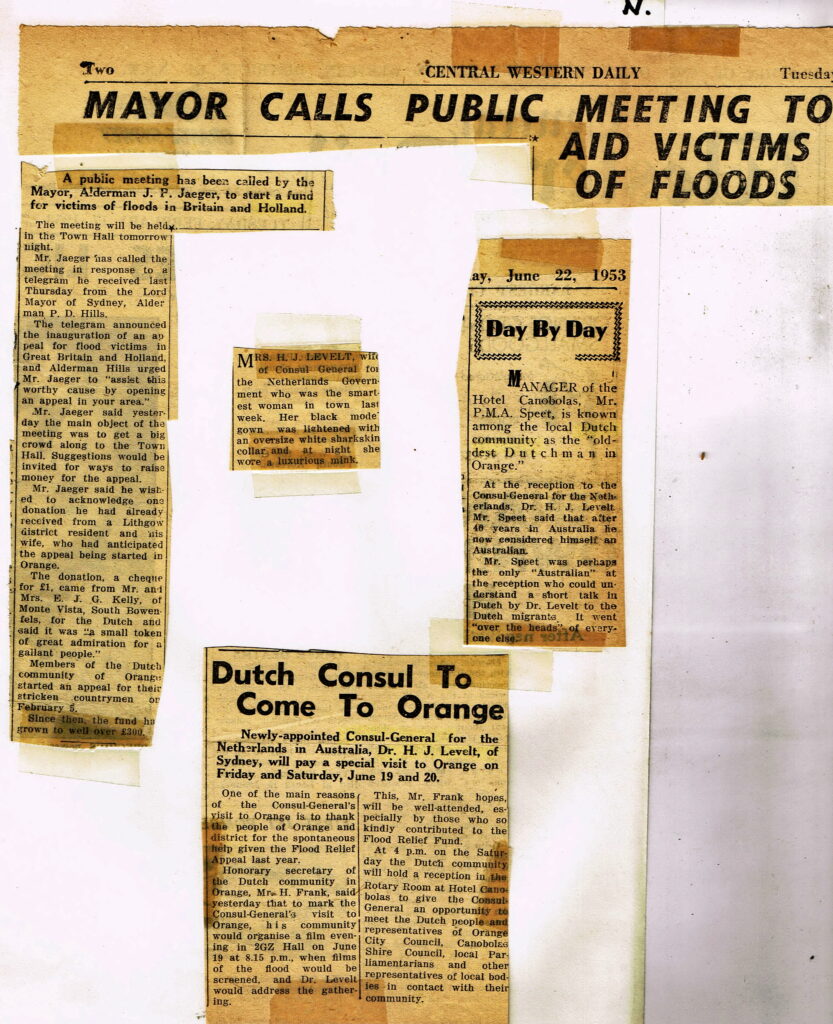
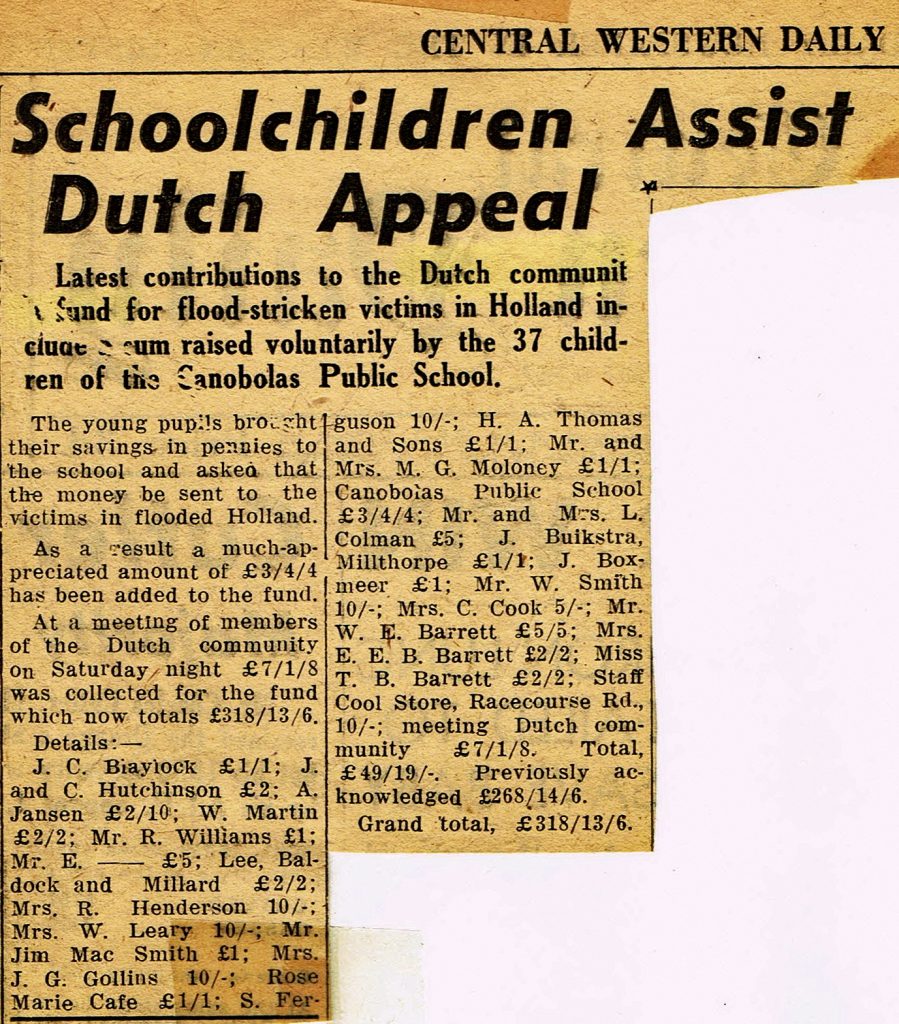
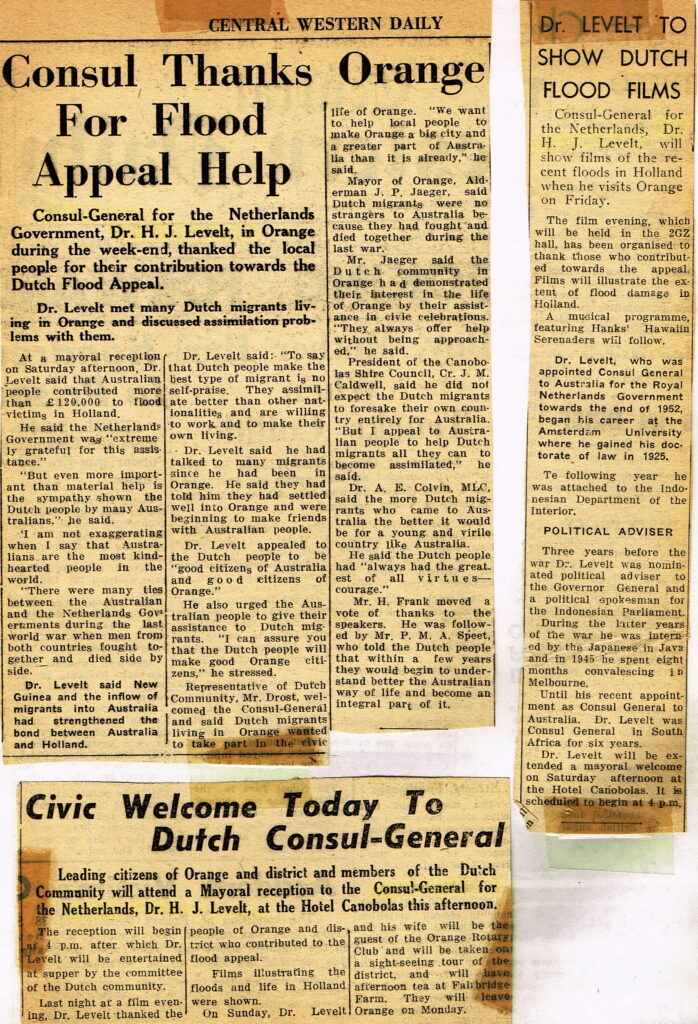
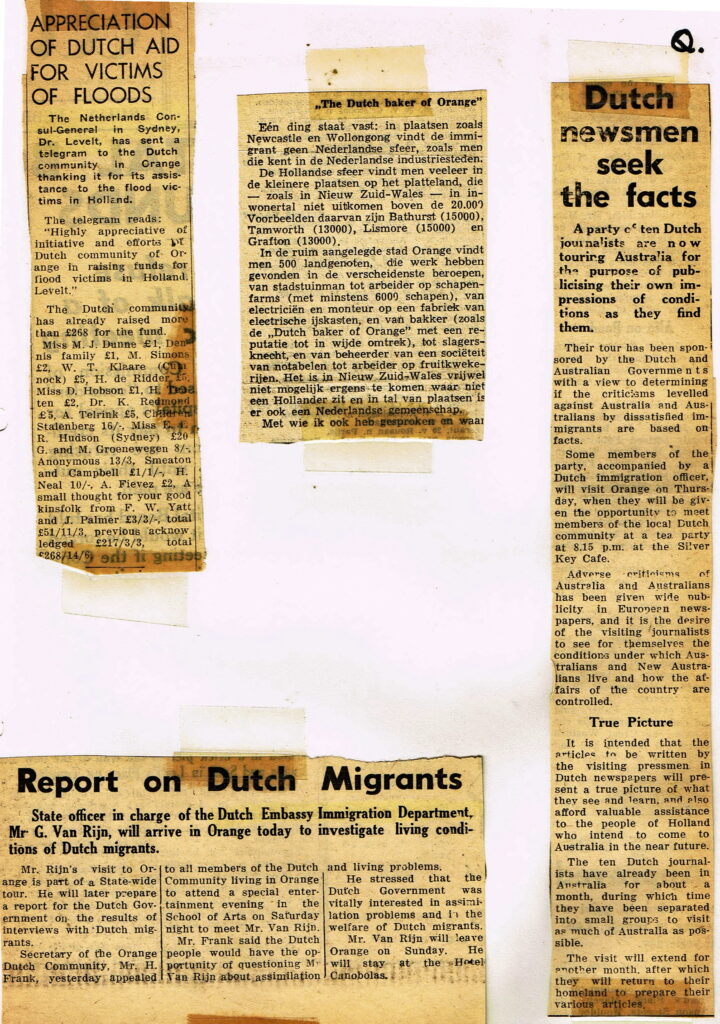
The Delta Plan
All countries affected have since implemented measures to make reoccurrence of such devastation less likely. In the Netherlands these measures went under the name of the ‘Deltaplan’. The results of the plan were more than just a safer environment. There were new dams functioning as major roads, fresh water where there was salt water before, new recreational areas, changes in fishing villages etc. In other words the country changed significantly because of the event.
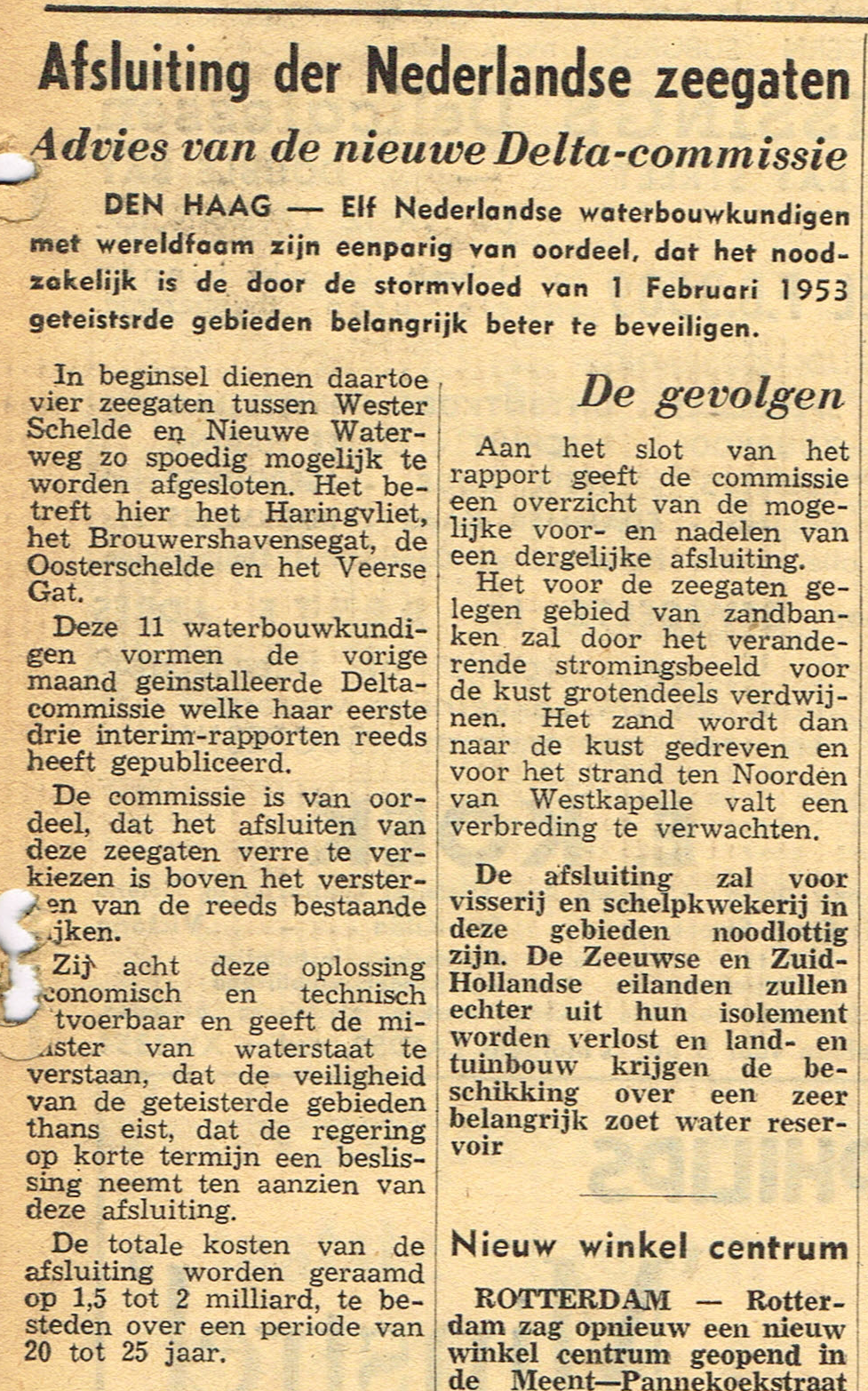
Click here for more articles on the Delta Works.
Memorabilia brought back to Australia
Over the years many Dutch migrants when visiting the Netherlands for family reunions have taken the opportunity to visit the Delta works. They brought back with them ephemera relating to this project. These brochures and books also eventually ended up in the DACC archives.. What follows is a small selection of this material.
